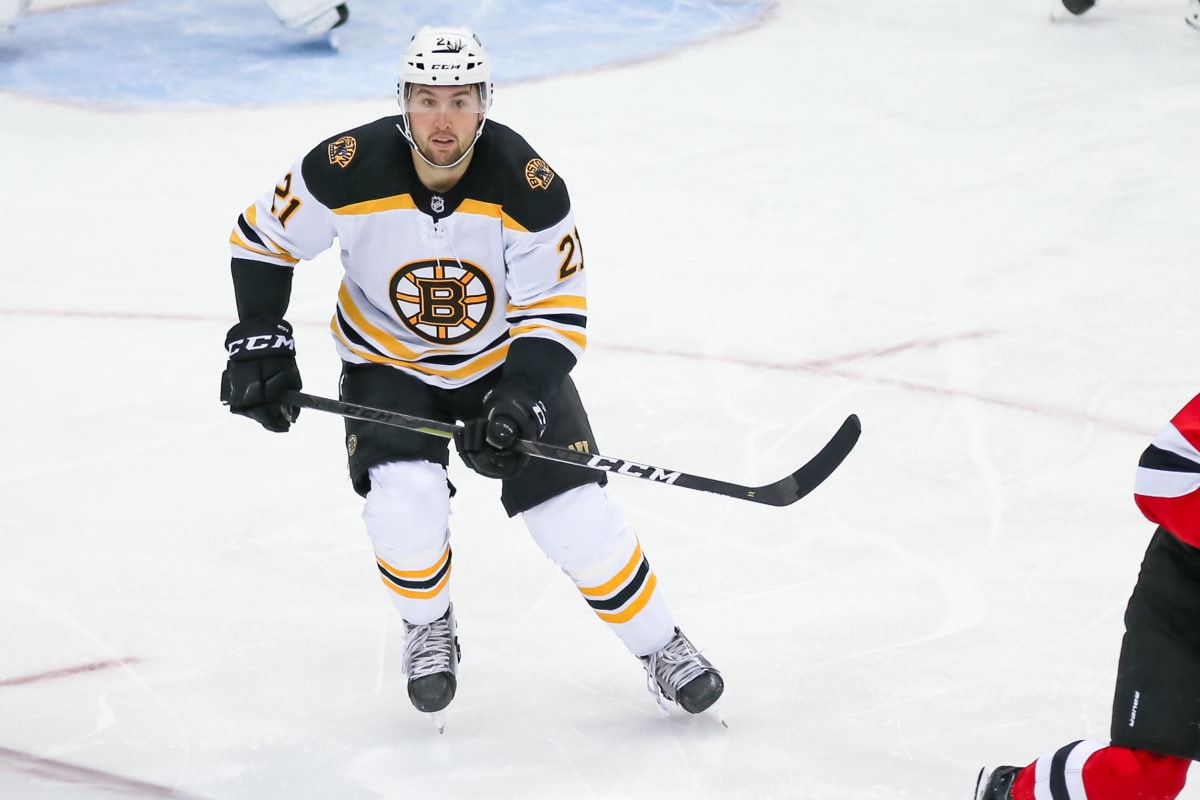It’s undeniable that Jake DeBrusk’s current season with the Boston Bruins has been disappointing. The 24-year-old winger has only 11 points in 36 games, a far cry from his 2017-18 and 2018-19 seasons, where he scored 43 and 42 points, respectively. The opportunity arose for DeBrusk to adjust when he returned from a one-game benching and scored a goal against the New York Rangers on March 11 but was quickly snuffed out shortly after with a stint on the COVID-19 protocol list. Since then, he’s seen minutes on all four lines, a handful of healthy scratches, and taken some stern comments from Bruce Cassidy, but there is still no resemblance to the point-scorer he used to be.

What has happened to the player that was once a big piece of this Bruins team’s offense? There’s a surplus of explanations from Boston fans, ranging from the concussion he suffered in the 2019 playoffs as the source of his regression to the notion that his early career success was a fluke. Emotions run high on this topic and there is no shortage of lamentations about the Bruins’ 2015 draft. However, to judge DeBrusk objectively, we need to dive into the root and solution of the problem.
Diagnosing the Problem
DeBrusk has been a bit of a mystery for the past two seasons, as fans and experts try to understand what it is that gets him going – and what puts him in a slump. He is meant to be a goal scorer, for sure, but getting into a position to succeed at that kind of game has been a stumbling block. Is he good at forechecking and cycling? Is he a net-front presence? Does he excel more at dump-and-chase? Or does he score more off the rush, and who is entering the zone on these goals?
Advanced statistics don’t simplify these issues much, either – DeBrusk shows wildly different numbers across his four seasons in the NHL in several categories. I was able to make a few general observations, however. One is that DeBrusk is not a neutral zone player. He is what analytics experts tend to call a “neutral zone passenger,” which means he is better off leaving the zone entry attempts to his linemates and simply getting himself in a position to forecheck. When he does this, he is pretty good at it. However, he switches between preferring dump-ins versus controlled entries from year to year; he is consistently above average in forecheck pressures per 60 minutes since 2018-19 and was above average at recovering dump-ins in 2019-20 as well, making him one of the best forecheckers on the Bruins that season.
One thing did stand out to me while watching video of his goals from the last two seasons: he got to the net a lot. In 2018-19, arguably his best season to date, 18 of his 27 goals came on net-front and net-drive actions: 10 tip-ins and redirections, 3 rebounds, and 5 touch-and-score goals. (Unsurprisingly, he also led the team in backhand and tip-in goals that season.) When he had a nose for the net and his stick blade on the ice, all it took was a simple redirect or a rebound for him to get the puck past the goalie.
However, in the past two seasons, DeBrusk’s shot types are predominantly wrist and snap shots, while the number of backhand and tip-in attempts has decreased dramatically. These two shot types are a good proxy for how much time a player is spending net-front, and the numbers show that DeBrusk is no longer spending much time there, choosing instead to attempt offensive plays further from the net. For a player who gets the majority of his goals in close, that’s not good.
Finding the Right Role
To find the back of the net, DeBrusk must get to the front. This season, we’ve seen him spend less time in that position and more time attempting rushes outside the faceoff dots, getting angled off towards the boards by opposing defensemen and taking long-distance wrist and snap shots. This kind of game is something that would be best left to his linemates. It seems as though he is simply trying to do too much right now like he is looking for goals away from where he excels.
This is perhaps one reason why the line of Nick Ritchie, Charlie Coyle, and DeBrusk hasn’t panned out. DeBrusk’s natural role as a net-front dweller has been replaced by Ritchie, which takes him out of those opportunities that gave him so many goals a couple of years ago. To make matters worse, he must also play on his off-wing. The way this line is set up forces DeBrusk to be in a position that doesn’t play to his strengths, one that is better suited for a playmaker or shooter.

It’s likely odd to hear someone say that DeBrusk isn’t a shooter, considering he has such a quick release and a large inventory of tricks and dekes that he can use to beat the goalie. These skills surely come in handy when DeBrusk is on a breakaway or in a shootout, but they aren’t helping him score a significant volume of goals in the long run. His ideal role would allow him to use his natural speed to drive to the net for redirections and get back to those in-tight plays that he thrived on not long ago.
Place in the Lineup
The top-6 is likely closed off for the foreseeable future, now that Taylor Hall and Craig Smith have turned the second line (and David Krejci) into an offensive beast. DeBrusk doesn’t look like his old top-6 self anyway, so he is better off finding that game in the bottom-6, where there is more opportunity and a simpler style of play.
If Boston wants to get DeBrusk going, that fourth-line spot could be the right avenue to start with.
— Conor Ryan (@ConorRyan_93) May 1, 2021
Didn’t lead to points on the board, but DeBrusk kept it simple and drove to the net / screened Luukkonen on a couple of extended O-zone shifts.
Breaking up Ritchie and Coyle could be a gamble, and Cassidy may not want to take such a risk so near to the playoffs. He instead seems to be leaning towards keeping them together and finding a fourth-line role for DeBrusk. The most intriguing combination is DeBrusk, Lazar, and Kuhlman, which has shown promise in the few games they’ve played together; Kuhlman’s high-tempo playing style and knack for shooting provide just the skillset DeBrusk needs. In any scenario, Cassidy must give DeBrusk more than just a couple of shifts to find some rhythm in his new position – shuffling him around too frequently is going to prevent him from finding consistency and getting back some confidence. The key, however, is for DeBrusk to make the necessary adjustments to his game if he does get the opportunity.
At the Right Tempo, DeBrusk Is a Postseason Threat
The 24-year-old winger still has a chance to salvage this season with a strong showing in the playoffs. When he’s on his game this time of the year, the Bruins benefit mightily; the season they made it to the Stanley Cup Final was the same season DeBrusk had his best playoffs performance with 11 points. They are certainly in a much better position when they have his energy and goal-scoring touch in the lineup.
His forechecking ability also must not be ignored. Along with a competitive fire similar to what we’ve seen from him in his better seasons, these assets become extremely valuable in the playoffs. His strengths as a player may not be what everybody expected them to be, but it’s time for us to move on and start looking at other areas where he excels. Most importantly, however, is that DeBrusk himself sees what those areas are. He can return to the goal-scorer he once was, but he has to remember how first.
* * *
Advanced statistics from Tableau/Corey Sznajder and NHL Stats